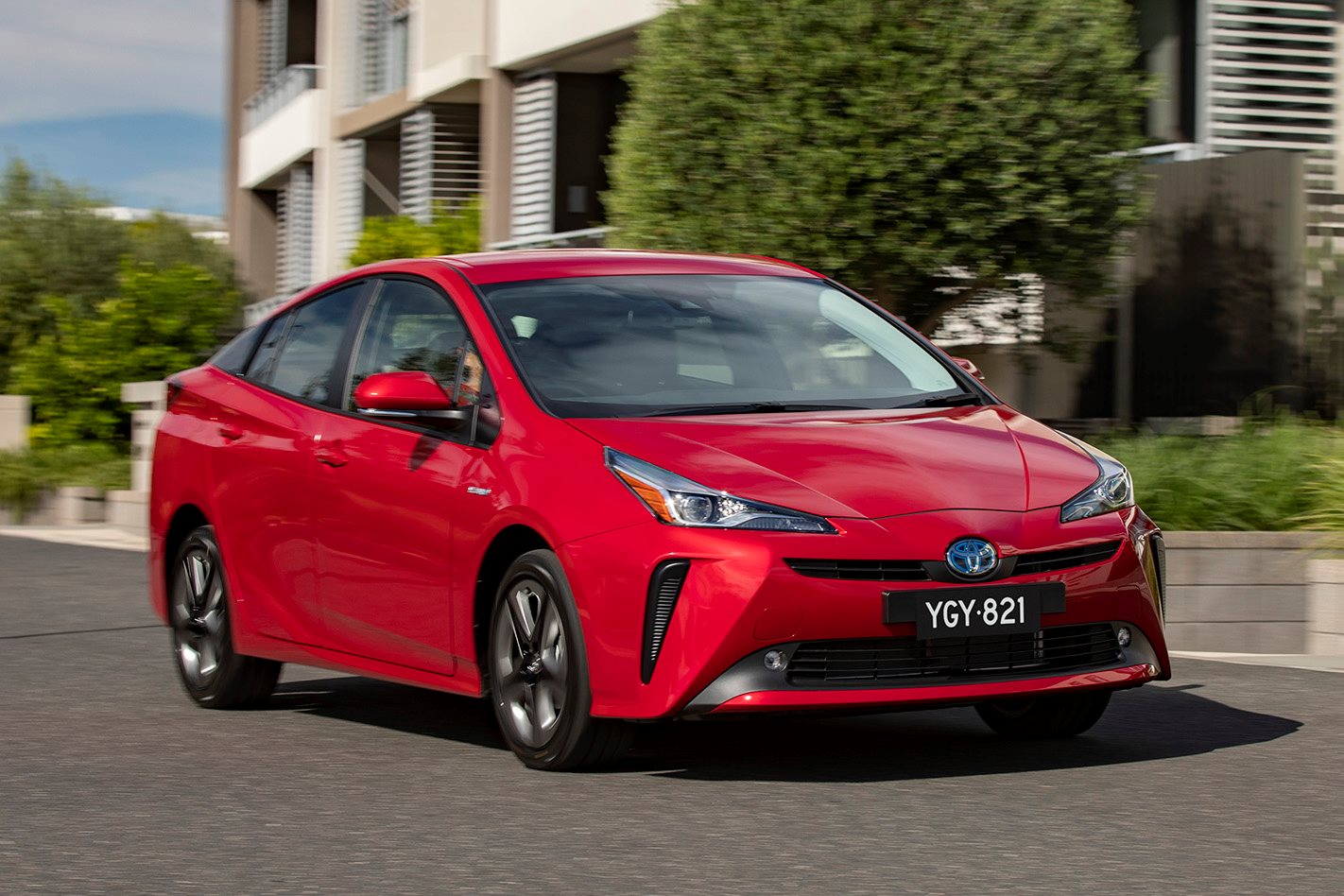
Toyota’s hybrid hatch gets a subtle makeover for 2019, though the core offering remains intact. How does the 2019 Toyota Prius fare now it’s halfway through its lifecycle?
What is it?
This is the first facelift for the fourth-generation Toyota Prius hybrid, with the most notable change being a cosmetic revision that ditches the divisive Dali-esque droopy headlight and tail light clusters. The result is a car that looks a little more ordinary from the outside, and for those who just want to drive something that doesn’t look like it’s been parked too close to a campfire, that’s a good thing.
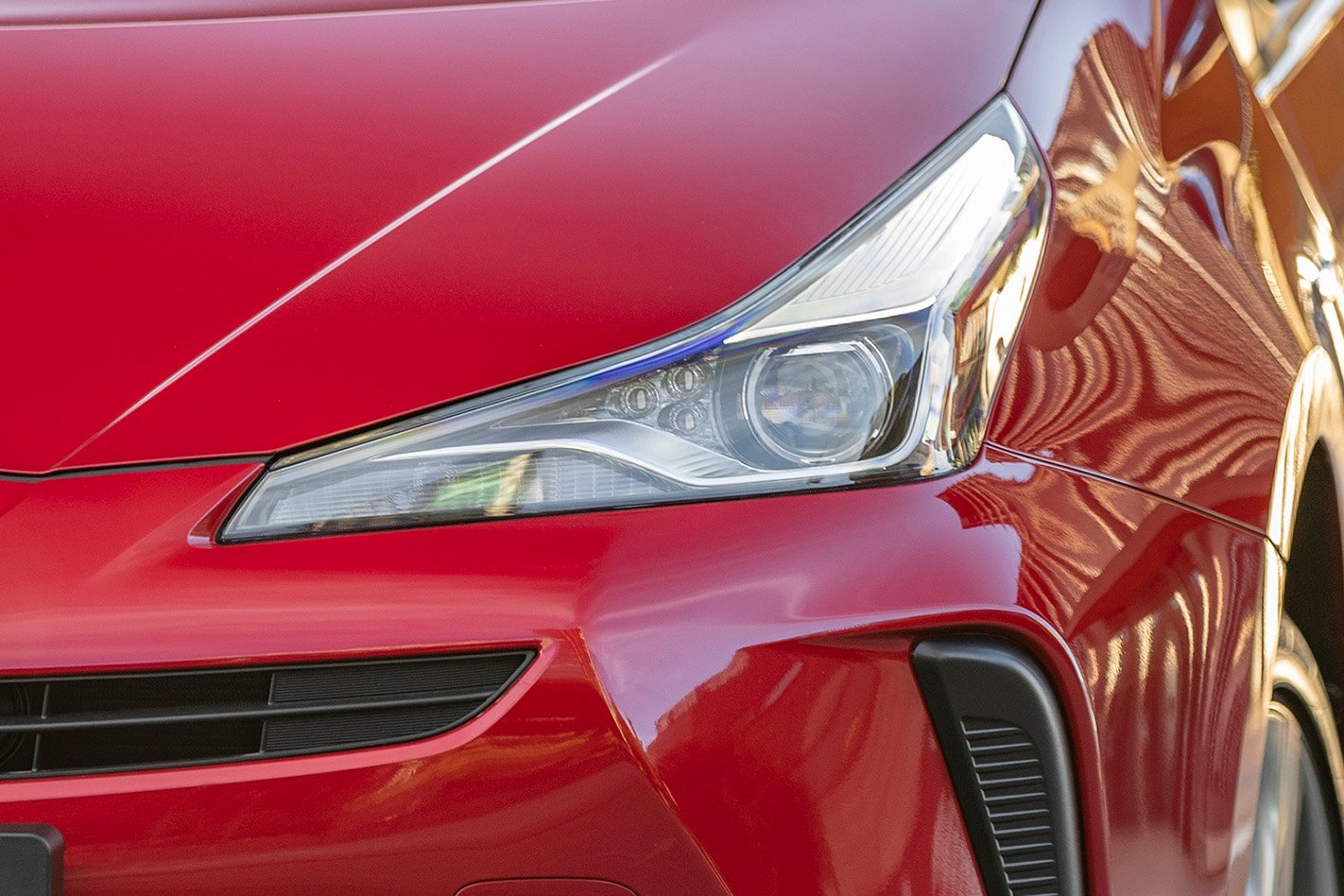
The other major change sees the Prius range’s infotainment system upgraded to a new seven-inch display with smartphone style multi-touch input, a 10-speaker JBL audio, an AM/FM/DAB+ digital radio tuner, live traffic data and satellite navigation, as standard.
Voice controls have also been expanded to allow driver’s to set navigation directions while driving, though smartphone mirroring via Apple CarPlay and Android Auto are not offered – just the less ubiquitous Siri Eyes Free and Miracast systems.
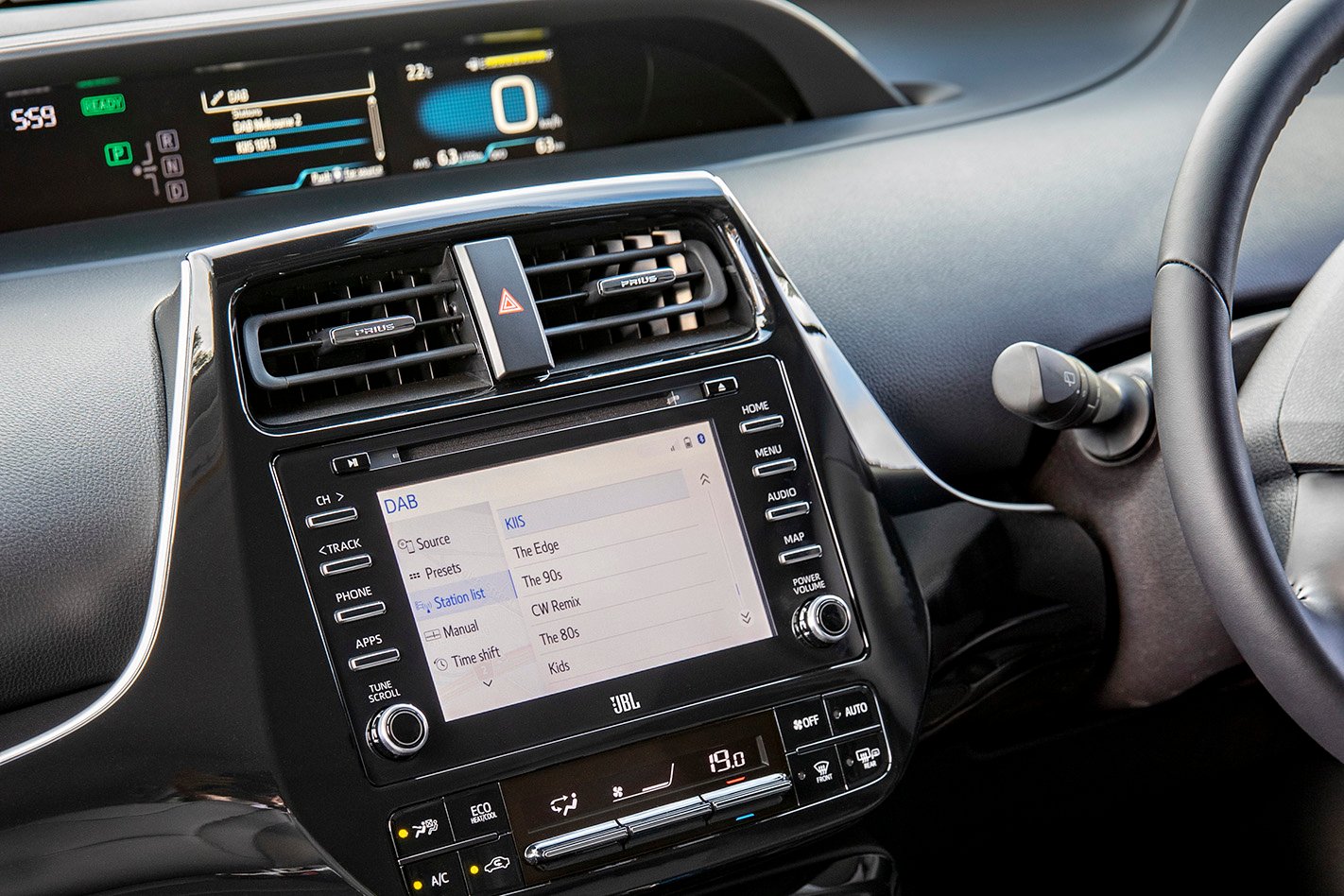
How much is the Toyota Prius?
The 2019 Toyota Prius range opens at $36,590 for the base model, lifting to $44,050 for the range-topping Prius i-Tech. Stepping up to the i-Tech isn’t necessarily vital to get a well-equipped car, mind you, with the base model already coming with plenty of high-grade equipment like, a head-up display, wireless charging pad, active cruise control, keyless entry and plenty of active safety equipment as standard.
Opting for the i-Tech variant only nets you 17-inch alloys instead of the base model’s 15-inchers, leather upholstery, a power-adjustable driver’s seat, heated front seats, blind spot monitoring and keyless entry on all doors, not just the driver’s door. Is that worth the $7460 price differential? In our opinion, it’s not really necessary.
Who is it for?
Anyone looking for a supremely fuel-efficient small car should consider the Prius. It’s been one of the most enduring eco-car nameplates, and one that’s become synonymous with treading lightly on the environment while also being dependable, comfortable and versatile.
Hatchback practicality and its small size makes it a good city car, while it’s more than capable of carrying four adults in reasonable comfort
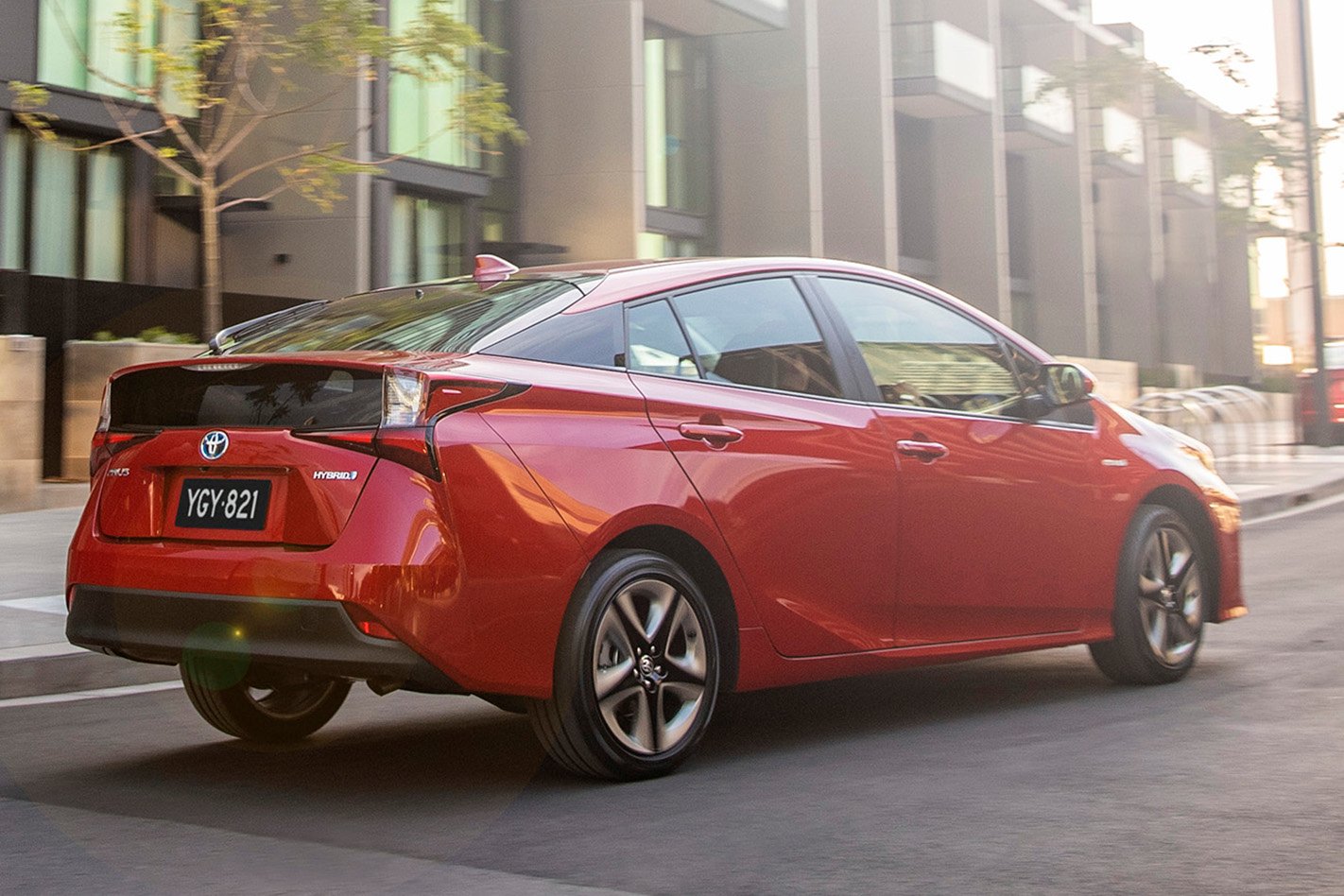
Is the Toyota Prius easy to live with?
The fourth-gen Prius is deceptively spacious for such a small car. The cabin feels light-filled and roomy, with plenty of headroom for those up front and respectable legroom for those in the rear.
Furthermore, a 502-litre boot capacity puts it well above the small-hatch status quo when it comes to hauling cargo, and folding the 60:40 split rear seats expands that area even further.
The wireless charging pad underneath the rather dainty transmission selector is incredibly handy if you’ve got a device that’s compatible with the cable-free tech, though the infotainment’s lack of full-feature smartphone mirroring means most will just endure the standard Toyota system.
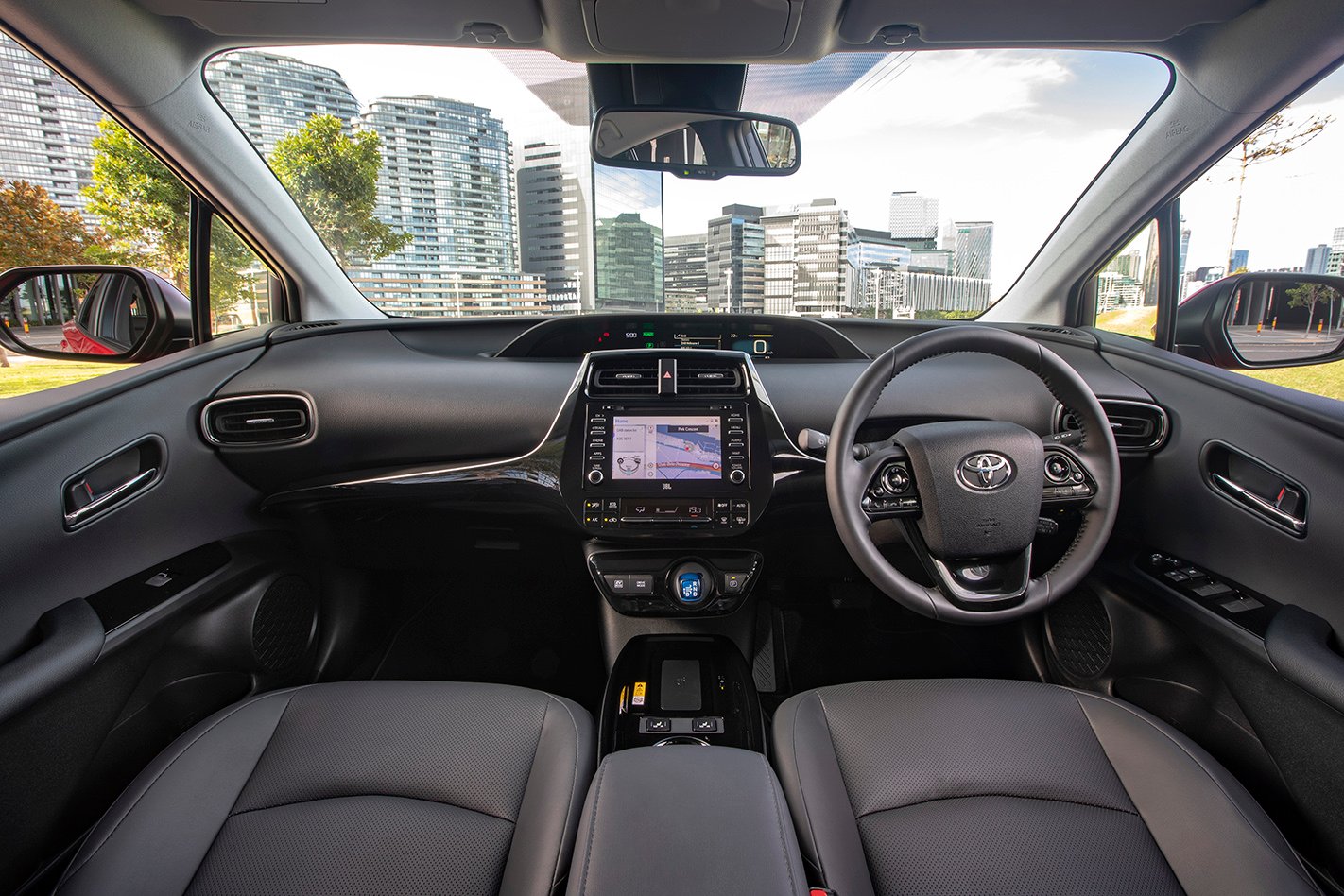
Despite being updated this year, it’s not at the sharp end of the segment for user-friendliness or responsiveness, though at least satellite navigation and Bluetooth media/phone streaming are standard.
And the addition of voice controls for sat-nav address entry is a solid improvement. Not only did the pre-update Prius not sport that capability, but it required you to bring the vehicle to a complete stop before it would allow you to type in the address by hand. The voice controls now allow you to complete that task while staying in motion.
New cloth trim for the base model’s upholstery looks and feels good, and the switch from glossy white plastics to black plastic trim around the centre console makes the Prius’ cabin look more dignified and hide dirt and dust better.
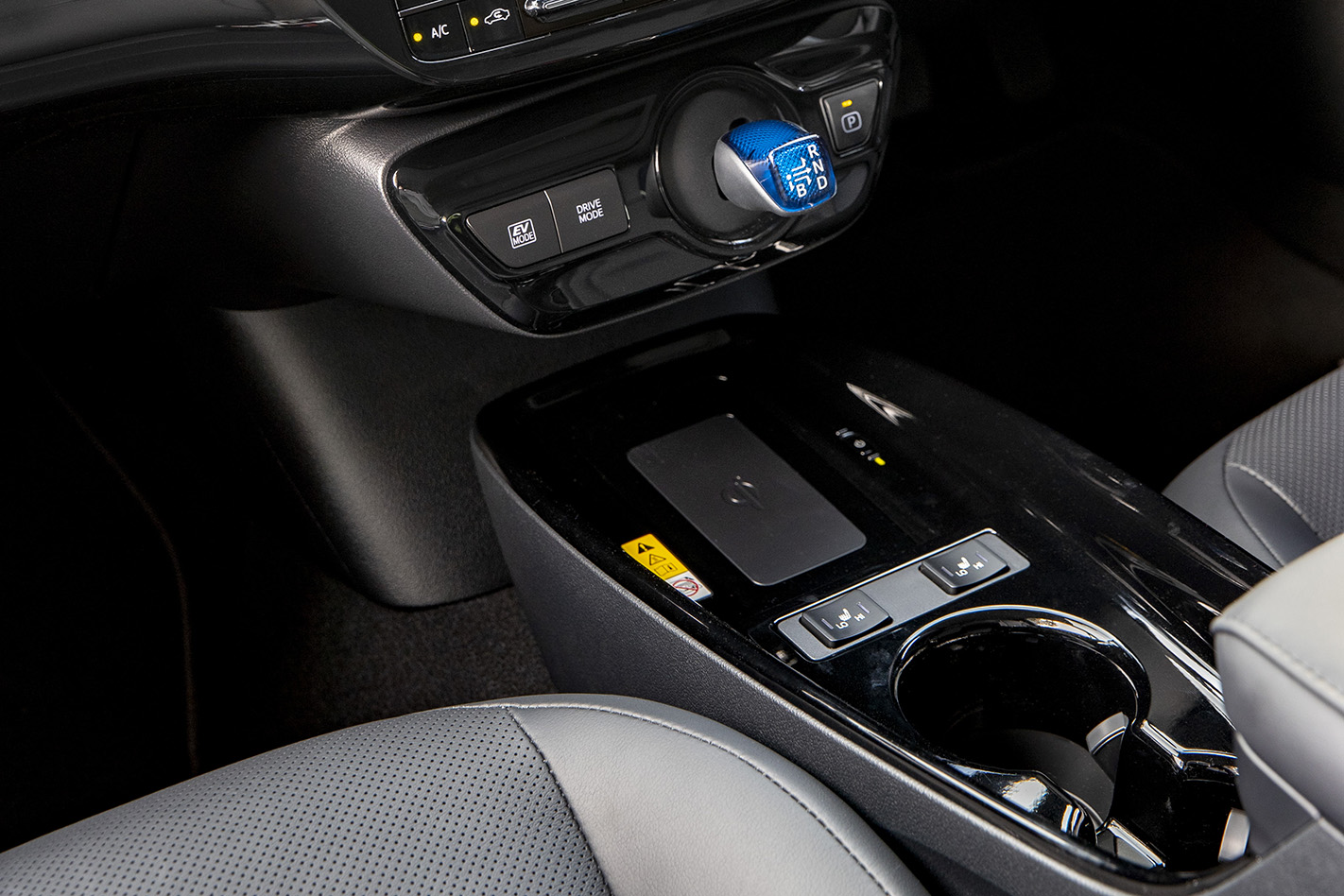
There are some minor ergonomic fails, like a surprisingly shallow centre console tray under the centre armrest and a rear-door aperture that requires taller passengers to stoop to enter. But mostly the Prius’ cabin feels quite well-considered in its design. We don’t necessarily like the centrally-mounted instrument cluster, but the head-up display does at least mean you don’t need to give your dashboard the side-eye in order to keep track of your speed.
Its foot-operated parking brake is a relic from a bygone era, and it’s irritating that Toyota still resists putting an electronic parking brake on its eco-tech standard-bearer. Not only would an electronic park brake be able to automatically set itself when the vehicle is put in park, and thus be safer, but it would make the driver’s footwell roomier as a result.
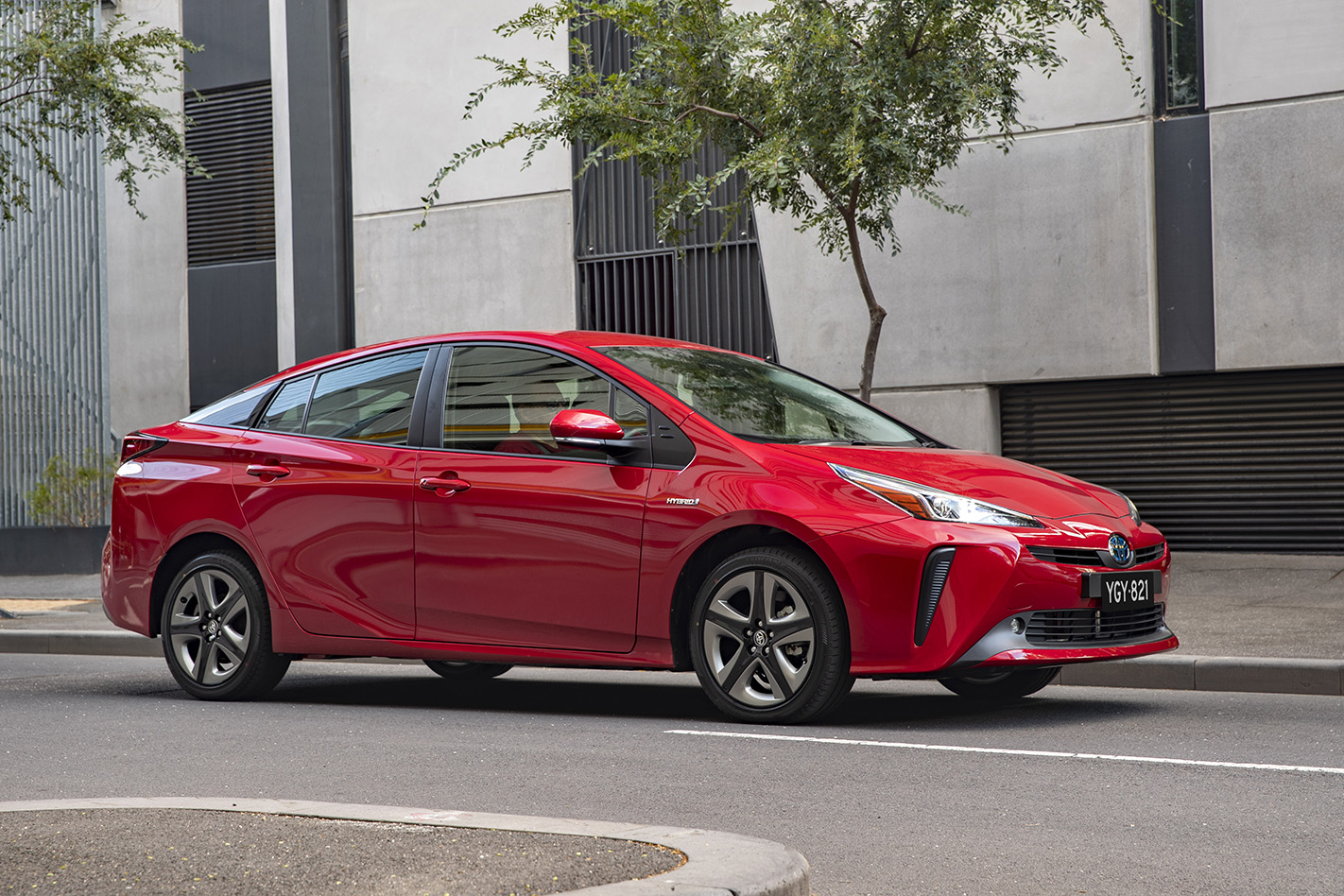
How well does the Toyota Prius drive?
For a serene driving experience, the Prius excels. Its well-muffled engine will often only send the most minor of vibrations when it’s working, and were it not for the status displays on the dashboard you’d be hard-pressed to tell when it’s idling – which isn’t often, once it’s all warmed up.
Request more forceful acceleration, and the engine gets a little vocal. Its constant-rpm buzz spoils the otherwise churchlike cabin ambience, but thankfully disappears once you back off at cruising speed, at which point the car will usually switch the engine off and just use the electric motor to maintain momentum. It’s slow, make no mistake, but it’s a peaceful experience.
The ride is compliant and pleasant on urban tarmac – especially so on the base model’s 15-inch alloys – but we really only have one major gripe about the Prius: in this age where fully-electric cars and plug-in hybrids are starting to become more common, the Prius’ inability to use 100 percent electric propulsion for more than a brief period (and even then, only if you have the gentlest pressure on the accelerator and don’t exceed 30-40km/h) makes it seem a little behind the times.
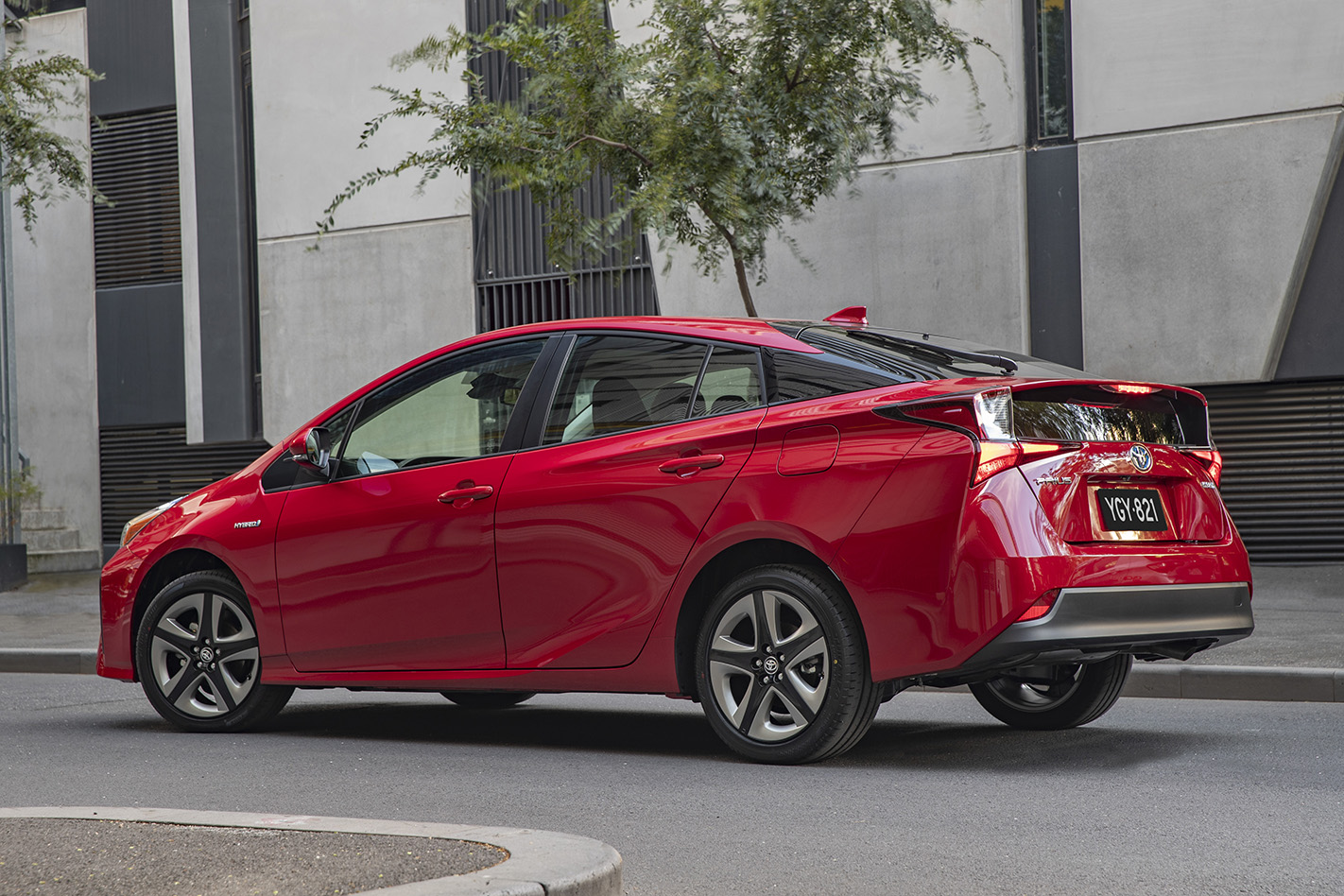
Feeling the petrol engine start up just because you needed to travel at 30km/h up a steep road seems like an unnecessary waste of fuel, given the electric motor feels strong enough to do so on its own.
It’s nevertheless efficient. Recording average fuel economy of less than 5.0L/100km over a week of mostly peak-hour commuting is definitely commendable, and the Prius’ official claim of 3.4 L/100km on the combined cycle doesn’t seem all that far-fetched. Good thing, then, as fuel efficiency is the Prius’ sole reason for being.
Verdict
We should probably address the obvious question, as we’ve avoided it up until now: why would you bother considering the Prius, given the new-generation Toyota Corolla Hybrid is now entrenched in Toyota showrooms and offers fuel economy that’s almost as thrifty, yet costs significantly less than the base Prius even when in top-dog Corolla ZR Hybrid form?
It boils down to a couple of things. Firstly, the Prius still has an efficiency edge despite not having a plug-in capability, with its 3.4 L/100km claimed average still 0.8 L/100km of the hybrid Corolla’s figure.
However the more meaningful difference comes in packaging. The Prius and Corolla may both sit in the ‘small car’ category and boast a hatch bodystyle, but the Prius provides far better accommodation to rear seat passengers and flaunts around double the boot capacity. It’s a more practical and versatile car as a result, so for those considering a top-shelf Corolla but who need to regularly tote a few passengers, the Prius may actually be the better choice.
And now that the Prius looks a lot more ‘normal’ thanks to the 2019 facelift, it’s a choice that won’t have people questioning your aesthetic tastes as a result.



